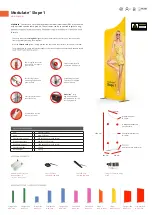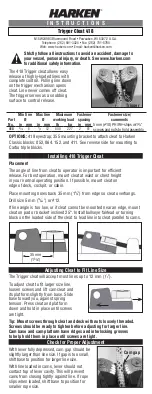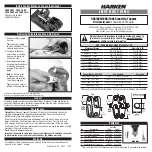
1.2. Physical modeling synthesis
When you want to create a sound, there are many methods of synthesis from which to
choose:
•
Additive, which creates a timbre by adding many simple waveforms together;
•
Subtractive, in which a raw audio waveform is passed through a filter to remove
frequencies and alter its harmonic content;
•
Frequency Modulation (FM), where waveforms are used in carrier/modulator
relationships and tuned according to the harmonic series to produce overtones
in the carrier waves;
•
Wavetable, which offers a wide selection of digital waveforms and then allows
them to be layered, filtered, and/or crossfaded with an X/Y controller or a
looping envelope;
•
Sample Playback, where recordings of a sound are triggered by a playback
device, and can be transposed by changing the playback speed;
•
Granular, which splits samples into very short “grains” and allows them to be
manipulated through a myriad of playback options; and
•
Physical modeling, where the output waveform is calculated according to a set
of equations and algorithms derived through extensive analysis of a physical
sound source or electrical circuit.
1.2.1. Music and math, issues and answers
A physical model attempts to codify the laws of physics that govern a particular form of
sound generation. A model typically will have many different parameters.
In the acoustic world, some of these parameters are constants that describe the physical
materials and dimensions of the instrument. Others are time-dependent components that
represent the player´s interaction with the instrument, such as bowing a string, pressing a
valve, changing breath pressure, etc.
In the electrical world, these parameters include the properties of different electrical
components and circuits and how they interact in complex ways. This is the basis for
Arturia's TAE® (True Analog Emulation) technology, which models the behavior of classic
electronic instruments down to the finest details.
This concept has been around for a long time, but development has been hindered until
recently, because processors that were powerful enough to handle the computational
complexity of physical models either didn’t exist or were too expensive. The first physical
modeling synthesizers from the 1990s were quite costly, and could only play a single note
at a time.
But that was then and this is now – if you’ve been watching the trajectory of computer tech,
you know those days are long gone. And we’re just as happy about that as you are.
The first big issue with physical modeling is that it involves a
ton of math. To recreate the
sound of a drum, for instance, a formula must be in place to represent all of the ways
the collision between a drum stick and a drum head sends shockwaves through a two-
dimensional membrane. To recreate the sound of a synthesizer, each component must be
modeled, then they must be combined into subsystems, then into the full circuit board,
taking into account all the different ways these thousands of components can interact with
one another.
That's a huge challenge. A few years ago, a French scientist finally completed a
comprehensive modeling of all of the parameters necessary to recreate the sound of an
acoustic guitar – and the calculations took three days!
Arturia - User Manual Solina V - Welcome to Solina V
6












































